
ICCROM_ICS10_JukkaFestchrift_en
.pdf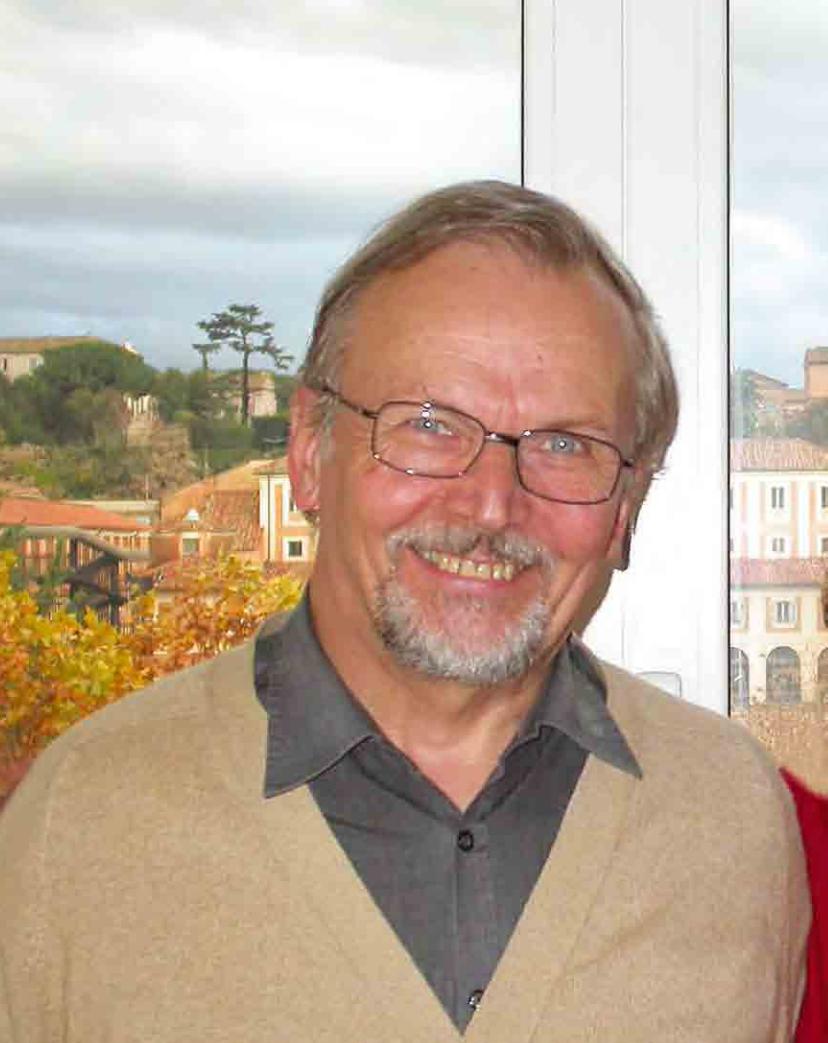
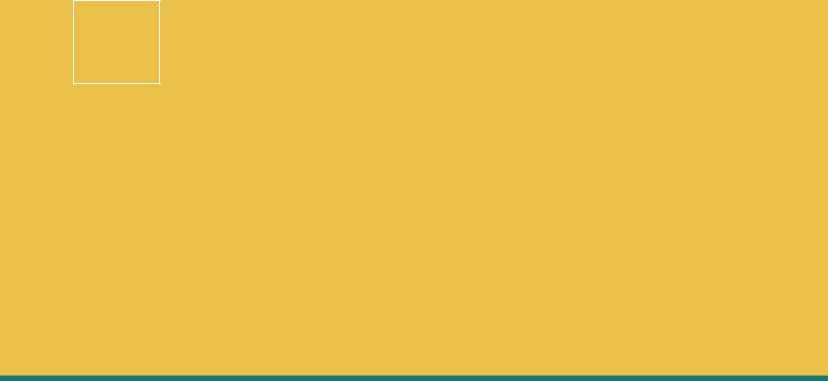
1 1
Jukka - an appreciation
[ Paul Philippot ]
Director Emeritus
Immersed in my papers, I came to discern dimly a human presence. In the crack of the door I always left open as a sign of availability, there appeared a thin dark silhouette. It was
Jukka, quietly requesting a meeting. He had come from his Nordic Finland, attracted by the course on Architectural Conservation that Professor De Angelis d’Ossat was leading at the Faculty of Architecture in the University of Rome.
The desire to open up this course in Italian to foreign participants – such courses were already being given by Professor Raymond Lemaire at Louvain and by Walter Frodl in Vienna – gave rise to a serious language problem, since simultaneous translation of specialist lectures using a precise technical vocabulary was hard to envisage. Little by little, a splitting of the course into an Italian one and an English one could not be avoided. This was the opportunity for Jukka, who was at first the assistant of the Italian course responsible for the foreign participants, to develop – initially with the help of Donald Del Cid – a course in English that was more adapted to a non-Italian audience. A shift that did not happen without a certain friction
which was difficult to avoid, but whose clear appeal and practical interest became quickly apparent to all, to general satisfaction, and one that left Jukka entrusted with directing an international course.
Since it responded to a need of which national monument conservation services were becoming more and more aware, such an initiative quickly stimulated a growing demand for participation. In fact it soon became evident that it was simpler and more efficient to organise courses in different regions, adapting them to local needs, rather than funding scholarships for those coming from different regions of the world. In other words, make the teachers circulate rather than the students. Thus Jukka found himself taking on the role of a “commercial traveller” in architectural conservation. In return, he accumulated a knowledge and experience of the particular characteristics of different regions which led him, by virtue of his constant availability thanks to his employment at ICCROM, to an ever broader area of competence to which UNESCO had ever more regular recourse. A fortunate formula to which retirement age has not put an end.
(Translated from French)
1 Jukka – an appreciation |
1 |
|
|
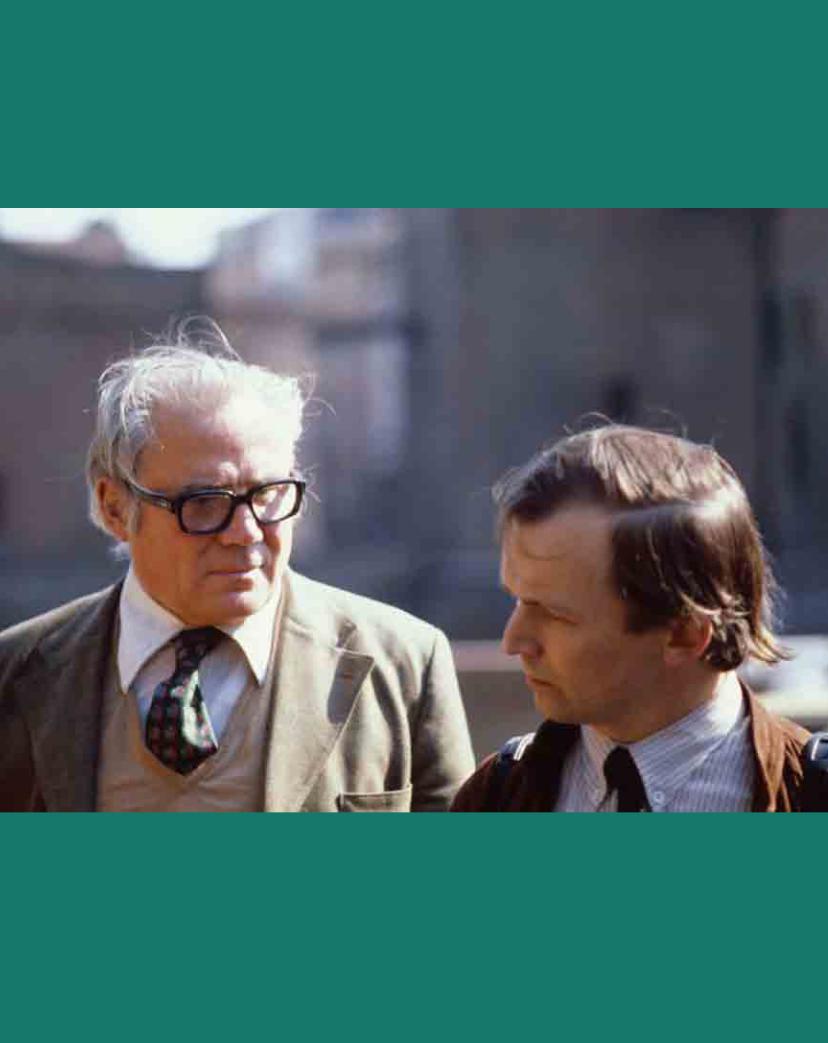
2Conserving the authentic: essays in honour of Jukka Jokilehto
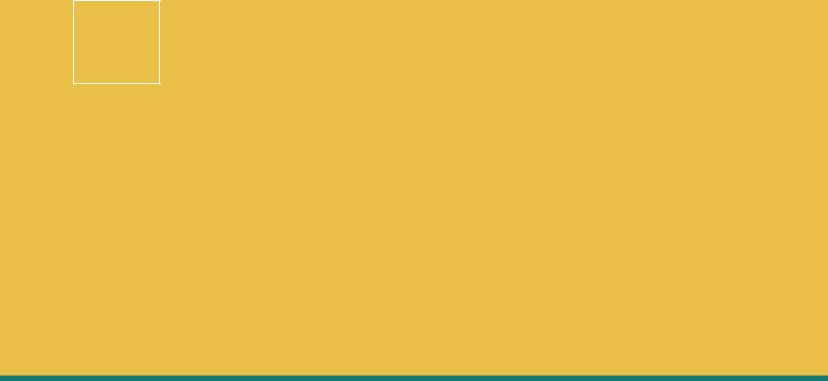
2
Early days of the Architectural Conservation Course of the Rome Centre (ICCROM)
How Jukka came to Rome
When I asked Jukka how it happened that he came to Rome, he said that in 1969 his former professor at the Polytechnic of Helsinki, Aarno Ruusuvuori, who was at that time the chairman of the Finnish National Committee of ICOMOS, called him to ask if he would be interested to participate in an international training course on architectural conservation in Rome. This course was organised by the Rome Centre (today ICCROM) in collaboration with the Faculty of Architecture of the University of Rome, La Sapienza. The Finnish National Committee of ICOMOS had received a letter from Pietro Gazzola, President of ICOMOS International, encouraging the national committees to find candidates to attend the course. Ruusuvuori, being aware of Jukka’s interests and language skills, had contacted him.
At the beginning Jukka was not quite sure that he wanted to go abroad as he had already been exploring the possibility of undertaking a M.A. degree at the University of Helsinki on the development of urban planning in Finland and the interpretation of the existing urban fabric. In the following year, however, he thought that the Rome course could provide some support to his studies. Therefore, he called Prof. Ruusuvuori and was told to contact the National Board of Antiquities, and particularly Pekka Kärki.
[Mehr Azar Soheil]
Finally, it was agreed that he could apply, and wrote a letter to the Rome Centre. The answer came from Dr Italo Carlo Angle, the Executive Secretary of the Rome Centre, who was responsible for the logistics. Considering that Jukka’s name ended with an “a”, Angle was convinced that Jukka would be a gorgeous Nordic female, and he was rather disappointed to welcome a bearded man instead.
As to why he came to Rome, Jukka was interested in issues such as the forces guiding urban development, and how to recognise the significance of historic traces in urban areas. These were not much considered in Finland in those days. He thought of undertaking Master’s-level research at the University of Helsinki, combining the history of town planning and socialeconomic sciences. Although Finland was known and praised for its modern architecture, Jukka still felt that much of quality was lost due to excessive renovation in old wooden towns such as his hometown Mikkeli in central Finland. Coming to Rome would be a means of understanding the approaches that had developed elsewhere in dealing with these questions. Therefore, close contact with an international context would give him the possibility of developing a new perspective. In fact, in Rome he came into contact with people such as Paul Philippot, Guglielmo De Angelis D’Ossat, Carlo Ceschi, Piero Gazzola, Laura and Paolo Mora, and Italo Carlo Angle, all of whom had a great influence on his thinking.
2 Early days of the Architectural Conservation Course of the Rome Centre (ICCROM) |
3 |
|
|
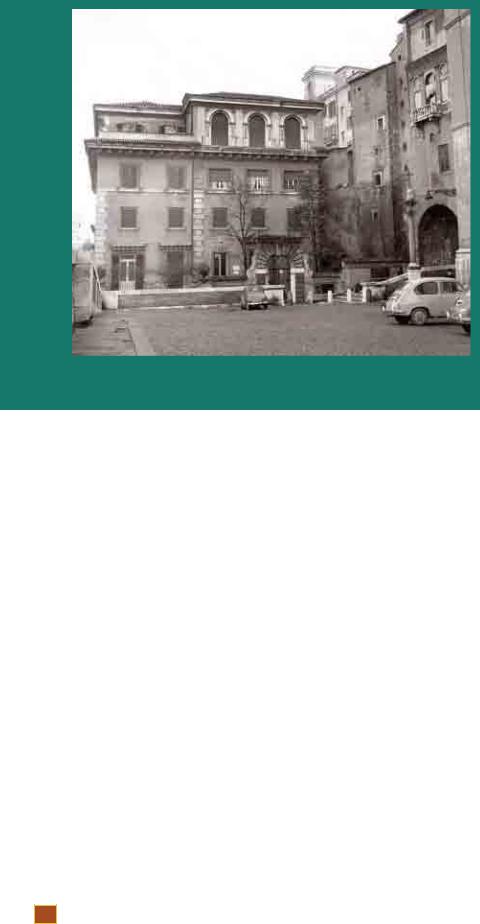
Fig. 1. The Rome Centre in 1959 seen from Piazza S. Francesco di Paola. The offices were at piazza-level (opposite), with the main entrance below to the left at via Cavour 256 (photo F. Rigamonti)
The architectural conservation course in Rome at that period was promoted through various organisations, such as ICOMOS, ICOM and national museums, as well as by the Italian Ministry of Foreign Affairs which also provided some scholarships. Jukka did not have a scholarship but had to pass a language exam at the Italian cultural centre in Helsinki. In agreement with the architectural office where he was working, he resigned from his position as advisor to the city council of Mikkeli on architectural and urban planning and came to Rome to participate in the 1971 Architectural Conservation (ARC) course.
Life in Rome in 1971
On his arrival, Jukka met Dr Angle, a jolly, fairly robust person, who while smoking his pipe asked him in what language he wanted to speak. Jukka, with some courage, responded: whatever! So they spoke Italian, even though his knowledge of Italian at that time was fairly minor. Angle’s parents were Italian and Polish, and he spoke fluently many languages, although with a strong personal accent. According to Jukka, Angle resembled a Renaissance figure, able to discuss almost any subject in whatever language and also of many interests. He was the one who was mainly responsible for the co-ordination of the ARC programme, but the director of the course was Prof. Guglielmo De Angelis
D’Ossat, Dean of the School of Architecture at the University of Rome, La Sapienza.
Arriving in Rome, Jukka first stayed for a while with a friend, Laura del Terra, but she lived rather far from the centre and it was more convenient to move into a pensione or small hotel in Via Cimarra 11, which was near the Rome Centre. This pensione had been used in the past by prostitutes. The cost of the room was 27,000 lire (14 euros) per month, but it provided a really basic facility. There was a large bed and a small table in the room and a simple shower in the corridor. The room was heated by a miserable radiator under the window, but one could hardly speak of heating. In fact, the window did not close properly. Therefore, all noise and voices from the street were clearly heard in the room. However, to Jukka, it was very much Rome. He remembered, for example, how early one Sunday morning a man, having had a long argument with his wife, rushed to his car. He hit both the car behind and the car in front when coming out of the parking space, and then, driving across the narrow street, he also hit the building!
At that time, the Rome Centre was located in Via Cavour. The direction, the secretariat and the library were on the first floor of Via Cavour, 256, next to the Italian Istituto Centrale del Restauro (ICR), with whom the Rome Centre had a close collaboration (Fig. 1). The courses and the laboratory were across the street, in number 221 on the third and fourth floors. Harold James Plenderleith was the director of the Rome Centre and Paul Philippot was deputy director. Dr Angle was the executive secretary, and also acted as the co-ordinator of the Architectural Conservation Course, maintaining contact with the Italian and foreign lecturers and organisations. The library was managed by Mrs Lucetta Amendola. It was still rather limited with just a few shelves; Dr Angle did his best to help and
provide books, especially through donations. Regularly every morning at 10.00 o’clock, the
staff of the Rome Centre went to the Asso Bar at the corner of Via Cavour and Via dei Serpenti to have a cappuccino or a coffee at a cost of 40-50 lire (less than 0.03 euros). Many of the restorers of the ICR and of the Rome Centre went for lunch to Trattoria di Mario (Masé) in Piazza Madonna dei Monti. Mario served the tables and his wife prepared the meals. Here a meal would cost about 950 to 1050 lire (0,49-0,54 euros), depending on whether or not one took an orange or something else as dessert. The front room served as an Osteria with marble tables. Here local workers could come and eat their sandwiches, ordering the wine from Mario. In the backroom, there were wooden tables covered with paper. This room
4Conserving the authentic: essays in honour of Jukka Jokilehto
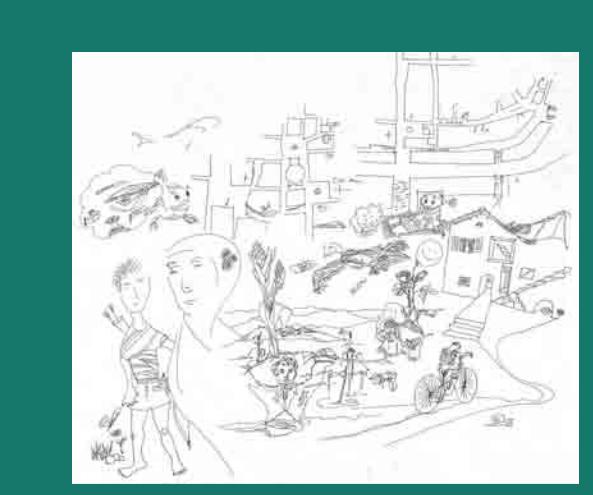
was used by the restorers. It was here that Jukka met practically all the restoration community of Rome, as well as Franco Rigamonti, a photographer from northern Italy who had travelled widely in the Middle East and had a passion for restoration of works of art. He had invented, for example, a mechanical device for holding the frames of canvas paintings when stretching a new canvas for them, an invention used by many restorers across the world. Franco also made photographic documentation of historic buildings for different organisations and often joined the visits of the Rome Centre’s conservation courses and took photographs.
Other interesting people included Luciano Maranzi who had carried out an emergency mission on behalf of the Rome Centre to Sri Lanka after a madman had sprayed paint over the fabulous paintings of Sigiriya. There were also the two beautiful and intelligent French restorers: Anne de Rothschild and her cousin Nelly de Rothschild, who later married the nephew of Axel Munthe, the Swedish medical doctor and writer who had his villa in Capri. Jukka usually made drawings on the paper covering the tables in the trattoria. These were
Fig. 2. One of Jukka’s lunchtime drawings on the tablecloth at the Trattoria di Mario, 1971
often taken away by people - on several occasions, a schoolteacher took them to show to his pupils (Fig. 2).
It was probably through Franco Rigamonti that Jukka was introduced more personally to Paul Philippot, his wife Annie and son Luca, who normally ate at Le Tavernelle in Via Panisperna, 48. The chef there was very conscious of spectacle, and he often had people there who ate enormous quantities of pasta, probably at no cost, just to make a show. There were also those who came to play music and sing, being paid from the tips given by customers. There was particularly a furniture merchant who came to play a guitar and sing to earn some extra money.
Participating in the
Architectural Conservation
Course (ARC) in 1971
The ARC course was attended more or less regularly by some forty to fifty professionals, representing a wide range of countries across the world. However, many Italian participants did not attend the course consistently. The lectures were in either Italian or English, and sometimes even in French, with simultaneous translation. Jukka knew some Italian, having taken lessons in Helsinki. He therefore made a special effort to learn this language, never listened to the translation in class, and tried to read books in Italian such as Carlo Ceschi’s Teoria di Restauro on the theory and history of restoration.
This book became Jukka’s introduction to the world of conservation. He read it word by word, using the Zingarelli Italian dictionary, which was a useful exercise although not too easy. At the same time, he took every opportunity to speak Italian with his colleagues, including Roberto Marta, already a senior engineer, who had been working for GESCAL, a state organisation constructing residential settlements, and Sergio Lucarelli, another
2 Early days of the Architectural Conservation Course of the Rome Centre (ICCROM) |
5 |
|
|

engineer, who taught photogrammetry. Other friends included the Italian Adriana Miccolis as well as many foreigners, such as Jorge Zepeda from Mexico, who were fellow course participants.
Although Jukka was on good terms with Prof. De Angelis and with the course lecturers, he was sometimes critical of the lectures. Once he posed a question to Prof. Ceschi regarding a new design for some lost carved corbels. Whereas Ceschi had proposed a simple geometric form, Jukka asked why not use a modern sculpture in character with the church, but expressing a contemporary spirit? Generally speaking, Jukka found the course and working in an international atmosphere with all the different nationalities and languages a fantastic experience.
The programme of the course was comprehensive, with subjects ranging from the history and theory of restoration to various technical aspects, such as humidity taught by Giovanni Massari, structural consolidation by Giuseppe Zander, photogrammetry by Hans Foramitti and Maurice Carbonnell, the conservation of plaster work, and so on. The lectures were accompanied by guided visits to restoration worksites in Rome. During the course there was a useful study tour to northern Italy, visiting towns such as Florence, Bologna, Ferrara, Vicenza, and Venice. Furthermore, Dr. Angle had made an agreement with the municipality of Capua for practical work experience studying its historic centre. The course was hosted by the City in a seaside hotel for a total of five weeks while the participants carried out a detailed inventory and survey of the urban fabric under the guidance of professors such as Camillo Gubitosi (from the University of Naples) and Luciano Pontuale, who was working for the Ministry of Public Works. The course assistant was Ingrid Brock from Germany, who had attended the course the previous year.
While the Architectural Conservation Course was very interesting, Jukka also had some criticisms of it. On the whole, he was of the opinion that, although there were many good lectures in the course, it had no structure. On one occasion when he was not happy with the order of the lectures, he took his violin and went off to follow the practical work of the Rome Centre’s Mural Painting Course (MPC) in the Caetani Castle of the old fortified town of Sermoneta near Latina (south of Rome). Here, Jukka became well acquainted with Laura and Paolo Mora, the principal teachers and directors of the MPC course. In Sermoneta Jukka followed the work of the students, as well as playing the violin - the sonatas by Händel and Corelli or the partitas by Bach. In the acoustics of the old sixteenth-century castle, the sound of the violin was quite impressive.
During the ARC course, Jukka established a close relationship with Paul Philippot, and started to make proposals for improving the course. In particular, he thought that the order of the lectures was arbitrary. It was mainly Dr Angle who invited the lecturers, first asking them when it would suit them to lecture. As a result, the lectures did not follow any particular line of thought or methodology. Jukka suggested that it would be better to first draft a general outline, and then invite lecturers to contribute to specific topics according to their experience and speciality. He also proposed that the Rome Centre should make an international survey in order to understand what was already taught at the national level, and what an international training could add to this knowledge.
Another issue was the international character of the participants. It was important to propose methodologies that could be illustrated by case studies. As a result of many such discussions, Philippot asked Jukka to come back the following year to act as course assistant, an invitation that Jukka accepted. He continually had new ideas as to how to improve the ARC Course. In fact, there were many evenings spent at Paul and Annie Philippot’s apartment in Via Panisperna where Jukka had long talks about how the course could be improved. The Philippots had a Siamese cat and, whenever Jukka came back from these evenings, he developed an allergic reaction. At that time he was not aware of his allergy to cats, or perhaps it started then.
At the end of the 1971 course, all participants were invited by the Spanish architect Alberto García Gil, a former course participant and responsible for the conservation of historic monuments in Spain, to attend a training workshop in Segovia. This became a kind of complement to the Rome Course. The topic of the seminar was architectural and urban conservation, but there was also an exercise to analyse the landscape setting of the historic centre of Segovia, thus already anticipating the notion of a cultural landscape.
Revising the ARC Course in 1972
After spending a few months back in Finland, Jukka returned to Rome in December 1971, staying first with his friend Gaël de Guichen who was also working at the Rome Centre. Gaël lived in an attic in Via Giovanni Lanza and, when he moved to another apartment, Jukka remained there for several months before moving to Villa Lante, the Finnish Academy on the Janiculum Hill. By the end of 1972, he had to leave the Academy and rented his present apartment, which was
6Conserving the authentic: essays in honour of Jukka Jokilehto
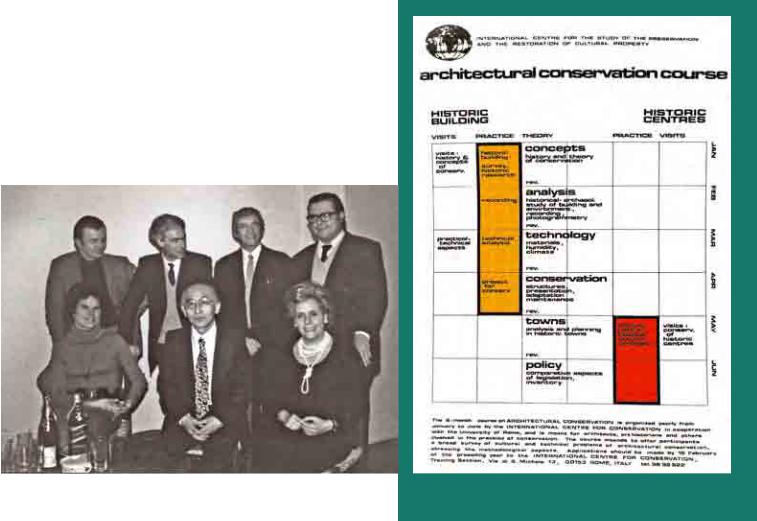
inaugurated, when still completely empty, over a drink with Paul and Annie Philippot, Paolo and Laura Mora, Franco Rigamonti, and Tomokichi Iwasaki who was then a member of the Rome Centre Council (Fig. 3).
Returning to Rome as course assistant in December 1971, he found out that the programme for the course that was supposed to start in early January was yet to be organised. He decided to start with the programme as it existed, and then develop it into a more holistic concept. To start with, he took a large panel, covering it with a grid corresponding to the working days of the course. Over this, he laid a transparent plastic sheet, on which he could attach labels in different colours, indicating lectures, discussions, site visits and exercises (Fig. 4). This scheme, much liked by De Angelis, was necessary because there were many changes that had to be accommodated. In fact, Jukka’s idea was to identify the different themes and group them in specific periods in order to concentrate the teaching and make it more efficient. Foreign lecturers were easier to manage, but the Roman professors did not always find this convenient as they had to take into account their daily commitments for the university. Therefore, the development of the course became a gradual process, which extended over the following years. The course started to shape itself, each year being an experiment for the following year, and eventually a stable number of professors together with visiting lecturers was decided on.
In the 1972 course, to Jukka’s surprise, there were some 90 participants (double the number of 1971). This was due to Italians discovering that, by continuing to study, they could defer their military service! A field exercise to analyse the historic town of Tivoli was organised and, during the first visit to the town where the course participants were received by the municipality in the city council hall, Dr. Angle gave a fantastic speech. Jukka asked him afterwards how he could speak so well without having any written text. Angle just smiled. The exercise was interesting, and involved professional planners in making a detailed analysis of the town. Later, in 1974, the ARC course was invited by a former course participant and assistant, Tomislav Marasovic, to carry out fieldwork in the small historic town of Trogir, just north of Split in Yugoslavia. This was a town of Greek origin, and became for Jukka personally an extremely valuable experience in the analysis of the Mediterranean architectural heritage.
Fig. 3. Inauguration of Jukka’s apartment in Rome, 1972 (from left, front row: Annie Philippot, |
Fig. 4. Course programme of the 1974 ARC Course |
Tomokichi Iwasaki, Laura Mora; back row: Jukka, Paul Philippot, Franco Rigamonti, Paolo Mora) |
|
|
|
2 Early days of the Architectural Conservation Course of the Rome Centre (ICCROM) |
7 |
|
|

It was also in 1972 that Dr Derek Linstrum, who was organising a new training programme in architectural conservation at the University of York, visited the Rome Centre to learn about its experience of the Architectural Conservation Course. Philippot asked Jukka, as assistant to this course, to guide Derek during his visit. This gave an opportunity to Jukka and Derek to discuss a wide range of issues. As a result they became close friends. Derek invited Jukka to attend the British Council short course on the conservation of historic structures at York the following September. This course was directed by Derek at the Institute of Advanced Architectural Studies located in the King’s Manor in York. This is where Jukka first met Bernard Feilden, one of the founders of the York course, who had also restored the King’s Manor (among many other historic buildings in the UK). During this course, Jukka was further convinced that his ideas about the new structure for the ARC course were justified. At the same time, he met several other excellent lecturers, besides Feilden, including Patrick Faulkner, Roy Gilyard-Beer, and Roy Worskett, who were all later invited to be part of the Rome Centre’s teaching team. Bernard lectured on the survey and inspection of historic buildings and supervised the practical work of the course in Rome. Later he was joined by Poul Beckman, from Ove Arup Partners, who had worked with Bernard to restore York Minster and Norwich Cathedral. Derek gave lectures on historic gardens, Gilyard-Beer and Patrick Faulkner on the management and presentation of archaeological sites, and Worskett on the conservation of English historic towns. Donald Insall lectured on his own conservation projects. In the following years, John Ashurst was introduce to the course by Faulkner, followed by Clifford Price, to cover the lectures on materials, especially stone and metals conservation. Giorgio Torraca’s lectures on building materials and their causes of decay were fundamentally important. There were visits to restoration worksites, historic buildings and gardens, urban areas and archaeological sites as part of the course programme. The participants were actively involved in making measured drawings, inspecting and writing reports on buildings. These records are presently in the ICCROM archives and hopefully one day may become of some use.
A turning point came in 1977 when Bernard Feilden became the director of the Rome Centre. He provided a United Nations organisational structure for the organisation and gave it its present name of ICCROM, which stands for International Conservation Centre ROMe. He established a
common room on the second floor of the ICCROM building so as to promote more contact among staff and participants. At this time too, a simple laboratory was established for the Architectural Course and dialogue between different disciplines was encouraged. This meant sometimes that participants on different courses at ICCROM shared common lectures in order to understand each other’s problems and so to communicate better. It was in the Architectural Course that Anglo-Saxon pragmatism and Latin theoretical approaches were combined. The aim of the teaching was not to give recipes, but to provide a methodology on which to base the options to approach problems and find solutions.
Bernard offered the ICCROM staff the possibility of carrying out research and encouraged them to participate in international conferences. Jukka took the opportunity and prepared a thesis at the University of York on the history and theory of architectural conservation, which has subsequently provided didactic material for conservation studies when published in book form and translated into several languages (Fig. 5).
Syllabus and participants of the 1971 ARC Course
When Jukka came to attend the ARC Course in 1971, it was called the Course of Specialisation in the Conservation and the Restoration of Historic Monuments and Sites. It lasted six months, starting in January and ending in June. The participants were architects, art historians, townplanners and archaeologists. The format of the course consisted in lectures and practical work (study of a monument, restoration works, practical training on the active preservation of historic sites, excavation works, visits to monuments), and seminars (comments and discussions after different lecture series, talks by participants covering their experiences in the field, seminars concerning cases, discussions of the restoration works, field training and monuments they visited). The lectures were grouped as follows:
I.Introduction, consisting of the history of architecture, methodical study of monuments and historic centres (G. De Angelis), the ethical value of historic monuments (P. Gazzola), photogrammetry and survey (G. Boaga, H. Foramitti & M. Carbonnell), as well as aerial photography at the service of
archaeology and study of monuments.
II. Theory and methods of conservation and
8Conserving the authentic: essays in honour of Jukka Jokilehto
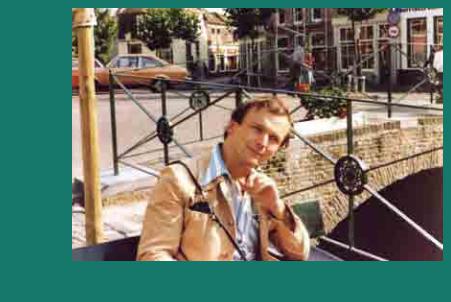
Fig. 5. Jukka in the Netherlands, 1977 (photo author)
restoration, which consisted in an outline of restoration of monuments in different civilisations and the history of the theory of restoration (W. Frodl and C. Ceschi), general principles of conservation and restoration of the works of art (P. Philippot), theory and methodology of restoration and conservation of monuments (C. Ceschi), problems of urbanism of historic centres (G. Scimeni), and a historical introduction to problems of the city (W. Ostrowski).
III.Active protection of historically and artistically interesting centres, sites and landscapes, which included: regional and urban planning as an instrument for preservation of landscape and historic centres (F.E. Kuyken), methods of analysis and revitalisation of historic centres (T. Marasovic), implementation of restoration projects and re-animation of historic centres (G. Spagnesi, R. Lemaire, G. De Carlo), safeguarding and re-animation of historic centres: social, juridical and administrative problems (F. Sorlin), and historical and
natural landscapes (R. Gilyard-Beer and others).
IV. Monument conservation and restoration, which included: Causes of deterioration of monuments (G. De Angelis), stability and consolidation methods (G. Zander), and the conservation and restoration of monuments: projects, implementation and practical problems (C. Ceschi, P. Gazzola, G. Zander and B. Field). Examples of conservation and restoration of monuments (G. Zander and R. Pacini), archaeological monuments:
excavation techniques (N. Lamboglia and B. Zevi), sounding and prospection techniques (R. Linington and L. Cavagnari-Vanoni); and examples of conservation and restoration of archaeological monuments.
V.Technical programmes and special technologies for scientific research: Ancient and present technologies of structures and materials: Mediterranean region (G. De Angelis), Central and Northern Europe (R. Lemaire), Middle East (G. Zander), India and Far East, and North and South America; the pathology and care of building material: Stone, terracotta, mortar and coating (M. Mamillan), wood (P. Mora and B. Field), ground and foundation (E. Schultze), humidity
in buildings, protection against vibration (G. Massari), protection against biological agents (C. Giacobini), protection against fire (H. Foramitti), and the conservation and restoration techniques of mural painting.
VI. Legislation and administrative organisation of the works: Juridical principles of protection and comparative legislation (R. Brichet), international regulations of artistic heritage (P. Gazzola), and introduction and guided visits to restoration work sites (R. Pacini).
The participants of the 1971 ARC course
There were 40 participants who attended the course in 1971: Ivo Verhaeghe (Belgium), Haralampy H. Anitchkin (Bulgaria), Maurizio Raeber (Chile), Juan Hoyos-Gonzales (Colombia), Kamal Abdu Saied (Egypt), Jukka Jokilehto (Finland), Georg F. Kempter (Germany), Plutarch Theocharidis (Greece), José Alejandro Flores Lopez (Guatemala), Angela Buickians, Parviz Hatamzadeh and Sohrab Neshvad (all Iran), Roberto Cassetti, Spiridone A. Curuni, Carla Maria De Feo, Paolo Giuliani, Roberto Marta, Adriana Miccolis, Roberto Parapetti, Jaime Escobar Saa, Graziella Vitale and Mario Zappetti (all Italy), Byung-Mo Kim (Korea), Jorge Zepeda Pallares (Mexico), Tara Nanda Mishra (Nepal), Waldemar Lysiak (Poland), Cristian Moisescu (Romania), Charles Feigel and Jean-François Loew (both Switzerland), Kassem Toueir (Syria), Supavadi Bhakdibutr and Uraiwan Tantiwong (both Thailand), Yilmaz Izmirlier and Ulku Izmirligil (both Turkey), Katherine Hayter Venning (UK), Anne E. Grimmer (USA), Le Tuan Nghia (Vietnam), Sanja Borcic-Simounovic, Alena Fazinic and Peter Fister (all Yugoslavia).
2 Early days of the Architectural Conservation Course of the Rome Centre (ICCROM) |
9 |
|
|
